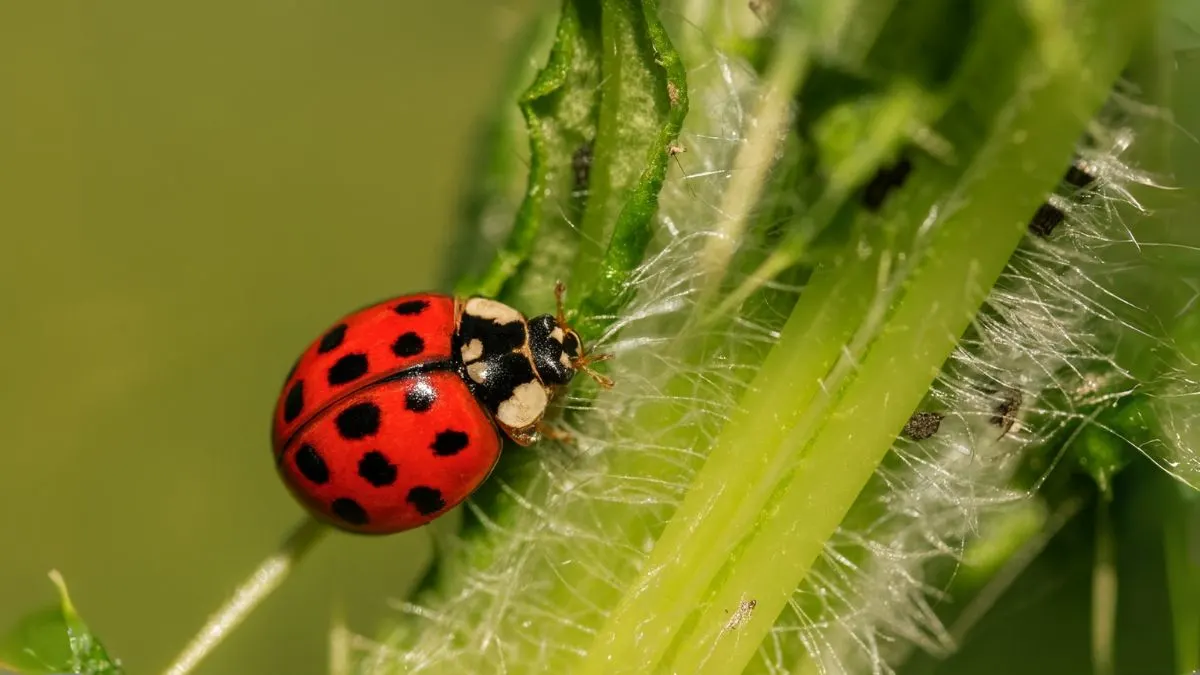If you’ve witnessed little red beetles scampering up and down plants and wondered whether they’re a friend or foe, well — it’s your lucky day. Ladybugs (or ladybirds) are the gardener’s best friend.
These tiny spotted soldiers systematically snack on pests like aphids, whitefly and mites to keep your garden chemical free.
But the fact is that it’s easy to lure ladybugs. Getting them to stay? For that, it takes a bit of garden know-how. This guide will teach you how to invite ladybugs to your garden and create the perfect environment for them with suitable natural plants, housing, and care.
Why Ladybugs Are the Gardener’s Bestie

Ladybugs are nature’s pest control team. A ladybug will consume up to 50 aphids in a single day, and their larvae are equally hungry. They hunt soft-bodied pests that ravage vegetables, herbs, and flowers.
The Pros in Ladybug’s Garden:
- You won’t need to rely on as much chemical pesticide.
- They’re healthy for the ecosystem.
- When foraging, they also act as pollinators.
- They make your garden healthier and more sustainable.
When you invite ladybugs to take up residence in your backyard, you’re designing a self-sustaining pest-management system that saves time, money, and benefits the environment.
Also Read: How to Get Rid of Spider Mites Without Harming Plants
Step 1: Provide Food Source
The easiest way to attract ladybugs is by offering them what they desire most — food!
Plant Aphid-Attracting Plants
Ladybugs love to eat aphids, so introducing some back into your garden might sound counterintuitive — but it’s necessary to ensure that ladybugs stick around. Provide them with a food source by planting plants they like (dill, yarrow, and fennel are among their favorites) and avoid spraying pesticide of any kind.
These plants draw small aphid colonies, which ladybugs absolutely love — it’s like a buffet. The key is balance — never too many pests, and never none.
Best Plants to Attract Ladybugs:
- Dill: The favorite among aphids and ladybugs.
- Yarrow: Its foliage and flat-topped clusters lure beneficial insects.
- Fennel: Draws aphids and offers both nectar and cover.
Step 2: Cultivate Blooms That Produce Pollen and Nectar
Ladybugs can’t live by aphids alone — they need pollen and nectar to keep up their energy levels, especially before and after winter. You can also attract them to your balcony or patio with pollen-producing blooms and herbs.
Recommended Blooms:
- Calendula (Pot Marigold): Adds color and tons of pollen.
- Cosmos: Small, feathery flowers that naturally attract ladybugs.
- Daisies and Dandelions: Simple food sources for adult ladybugs.
Continue growing plants and flowers year-round that are important sources of pollens and nectars.
Also Read: From Jars to Garden Beds: Easy Steps to Growing Moss at Home
Step 3: Offer Refuge
Ladybugs need hiding spots to relax, mate, and hibernate. They gather in sheltered spots to stay warm during cold months.
Don’t clear away brush, dead plant material, and leaves — it’s one of the easiest ways to let them overwinter naturally. You can also construct ladybug nests by tying bamboo tubes, bark, or straw together.
Ladybug Shelter Ideas:
- Piled leaves or straw in a dark corner.
- Wooden bug hotels, available at garden centers.
- Let part of your garden go a little “wild.”
Don’t be too tidy in your garden at season’s end — that messy little corner could be a ladybug’s winter home.
Step 4: No Pesticides (Even Organic)
If you want these insects, don’t use pesticides — even organic ones. The sprays that kill aphids or whiteflies will also kill ladybugs.
Instead, rely on nature’s balance:
- Include companion plants like marigolds and chives that deter pests.
- Handpick pests off tender plants.
- Use organic compost to strengthen plants naturally.
A chemical-free garden removes danger to ladybugs, allowing them to feast freely on other bugs.
Step 5: Make Sure There’s Always a Water Source
Even ladybugs get thirsty! Provide a shallow dish or birdbath with pebbles and water so they can drink safely.
Pro Tip:
Change the water often to keep it clean and avoid mosquito larvae. Add pebbles or marbles so ladybugs have something to land on.
Also Read: The Secret Connection Between Feng Shui and Cactus Houseplants
Step 6: Buy and Release Ladybugs (the Right Way)
If your garden doesn’t have them naturally, you can buy ladybugs from reputable suppliers. But how you release them is key!
How to Unbox and Release Ladybugs:
- Dampen the soil before releasing them.
- Release them at dusk or early morning when it’s cool.
- Place them near aphid-infested plants.
- Avoid hot, dry afternoons — they’ll just fly away.
Step 7: Advocate for Year-Round Habitat
Once you’ve attracted ladybugs, keep them around by maintaining an ecosystem throughout the year.
Tips:
- Plant seasonal blooms so something is always flowering.
- Use mixed plantings — combine flowers, herbs, and vegetables.
- Encourage biodiversity: the more kinds of insects, the stronger your ladybug population will be.
Also Read: Growing Gladiolus: The Secret to Tall, Colorful Blooms in Your Garden
Quick Reference Table
Step |
Action |
Why It Helps |
1 |
Plant dill, yarrow, fennel |
Provides food via aphids |
2 |
Add pollen-rich blooms |
Gives ladybugs nectar for energy |
3 |
Leave brush and hollow stems |
Offers safe winter shelter |
4 |
Avoid pesticides |
Keeps ladybugs alive |
5 |
Provide water source |
Prevents dehydration |
6 |
Release at dusk |
Helps ladybugs settle |
7 |
Keep plant diversity |
Ensures year-round food |
Personal Experience
Last summer, I noticed my rose bushes were under attack by aphids. Rather than using pesticide sprays, I chose to attract ladybugs naturally. I planted fennel near the roses and yarrow nearby, leaving a small brush pile by the fence. Two weeks later, small red dots appeared.
By late summer, the aphids were gone — and my garden was full of ladybugs. It was the most environmentally responsible pest control I’d ever tried — and it worked like a charm.
Conclusion
Attracting ladybugs to your garden means more than having pretty bugs visiting — it creates a healthy, vigorous, and natural ecosystem. This includes planting aphid-attracting plants such as dill, yarrow, and fennel, using fewer pesticides, and leaving brush and hollow stems undisturbed for shelter.
Get these chemical-free pest controllers working for you this season, and your garden will thank you with healthier plants, fewer pests, and plenty of natural charm.






